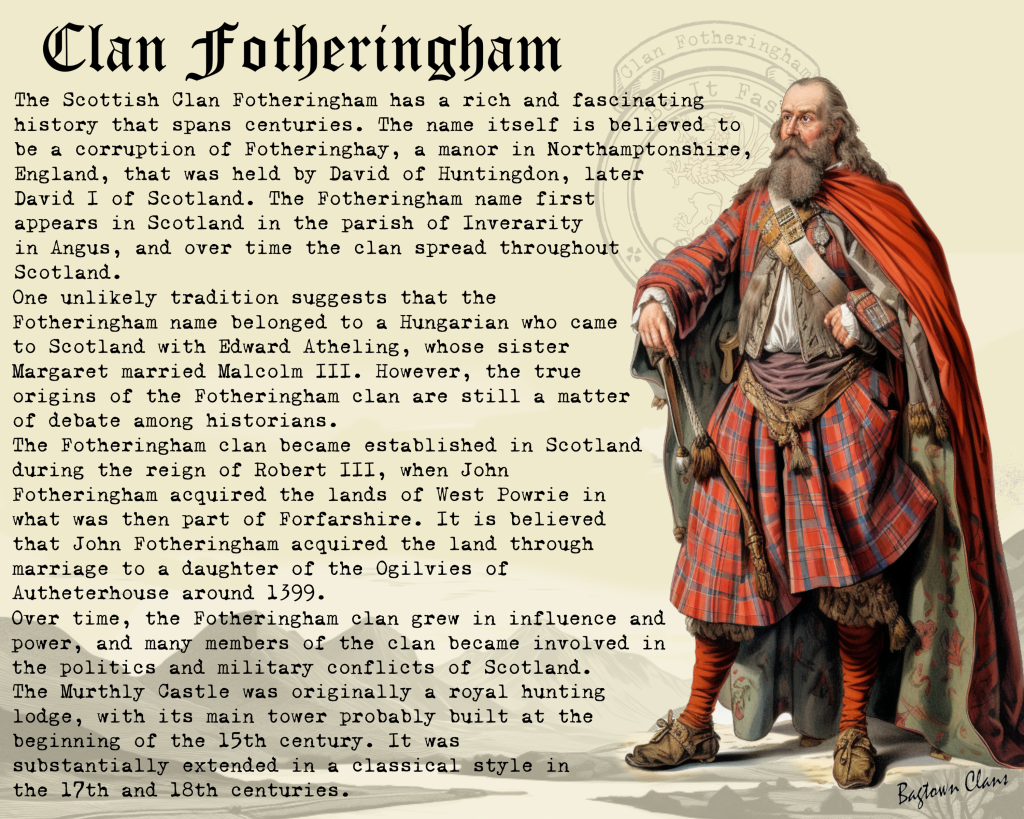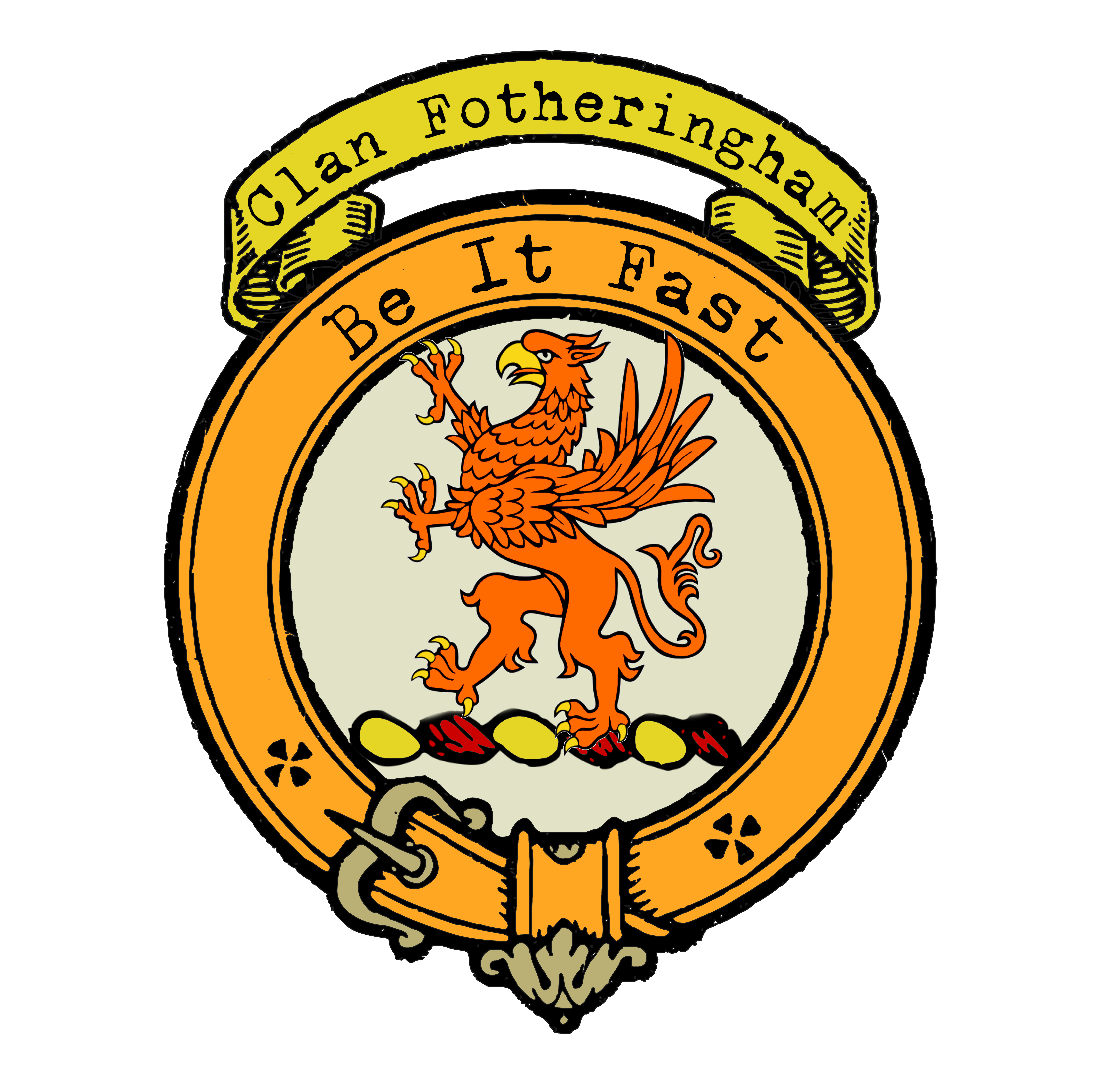Fotheringham Clan
|
|
CREST: A griffin segreant Proper MOTTO: Be It Fast TRANSLATION: N/A VARIATIONS: Forthingham |
| The Scottish Clan Fotheringham has a rich and fascinating history that spans centuries. The name itself is believed to be a corruption of Fotheringhay, a manor in Northamptonshire, England, that was held by David of Huntingdon, later David I of Scotland. The Fotheringham name first appears in Scotland in the parish of Inverarity in Angus, and over time the clan spread throughout Scotland.
One unlikely tradition suggests that the Fotheringham name belonged to a Hungarian who came to Scotland with Edward Atheling, whose sister Margaret married Malcolm III. However, the true origins of the Fotheringham clan are still a matter of debate among historians. The Fotheringham clan became established in Scotland during the reign of Robert III, when John Fotheringham acquired the lands of West Powrie in what was then part of Forfarshire. It is believed that John Fotheringham acquired the land through marriage to a daughter of the Ogilvies of Autheterhouse around 1399. Over time, the Fotheringham clan grew in influence and power, and many members of the clan became involved in the politics and military conflicts of Scotland. For example, Nicholas Fotheringham of Powrie attempted to deprive the widow of the Earl of Montrose of her lands at Dunbog in Glennesk in 1481. He was also among the many Scottish nobles who died at the Battle of Flodden in 1513. During the 17th century, Sir Alexander Fotheringham of Powrie was an ardent supporter of Charles I, and was taken prisoner at Alyth and sent to England in 1645. He died in exile in France in 1652. His grandson, David Fotheringham, was a renowned equestrian and was particularly fond of horse breeding. He matriculated the family’s coat of arms at the Lyon Court around 1677. In more recent times, Thomas Frederick Fotheringham served with distinction throughout the Crimean War as a captain in the Scots Fusiliers. He married Lady Charlotte Carniegie, sister of the ninth Earl of Suthesk. Their son, Walter, inherited the handsome estates of Grandtully and Murthly in Perthshire, along with the two splendid castles that still stand on these estates. The Murthly Castle was originally a royal hunting lodge, with its main tower probably built at the beginning of the 15th century. It was substantially extended in a classical style in the 17th and 18th centuries, and the ballroom in the east wing of the house is particularly splendid. Today, the Fotheringham clan continues to thrive, and many members of the clan can be found all over Scotland and the world. The clan has a rich and fascinating history that is worth exploring for anyone interested in Scottish heritage and culture. |
|
Citations:
|
|

 Purchase @ Redbubble
Purchase @ Redbubble
Purchase @ Amazon.com
Purchase @ Amazon.co.uk
